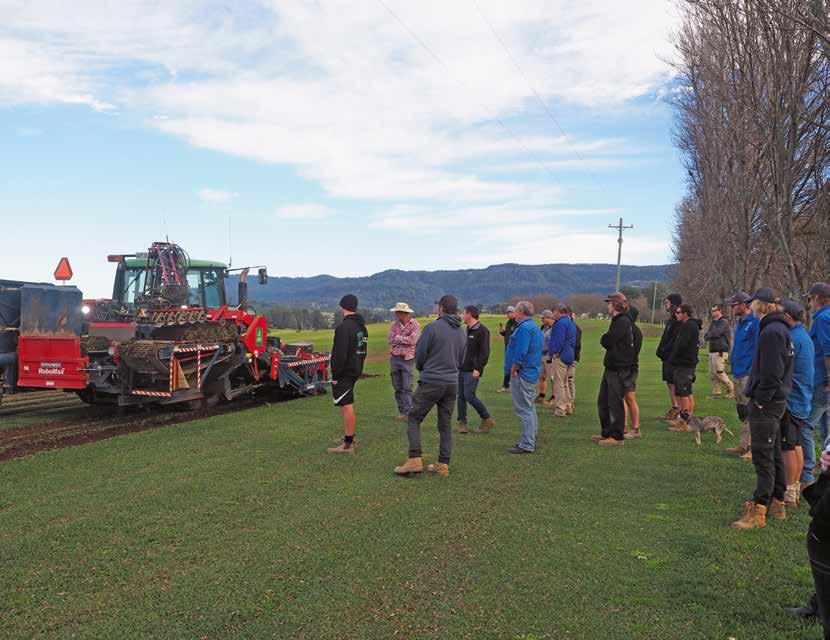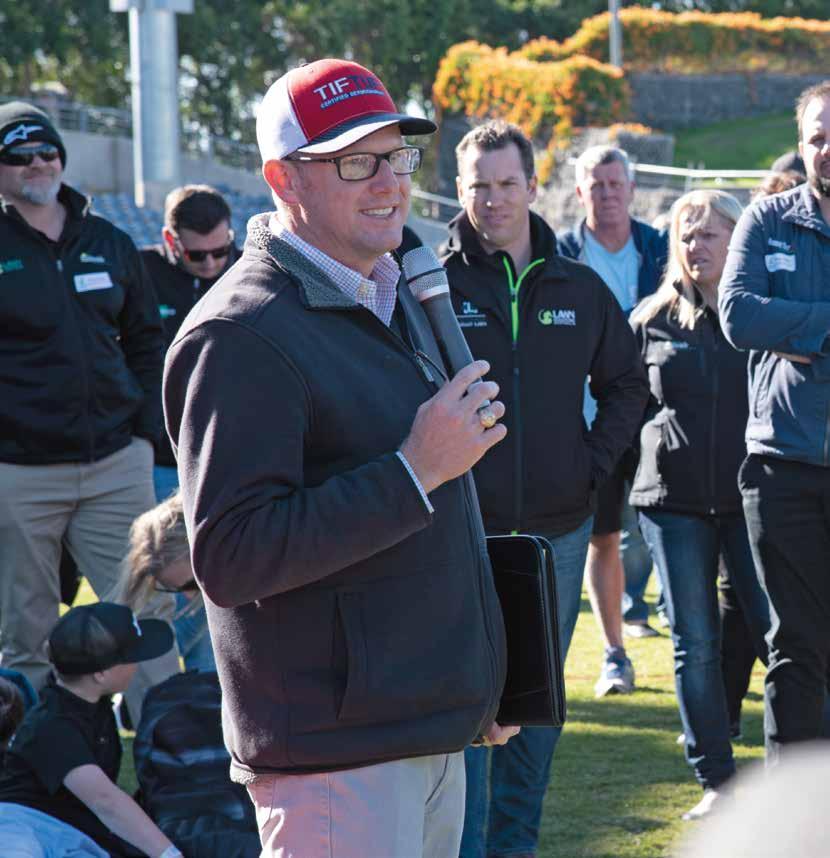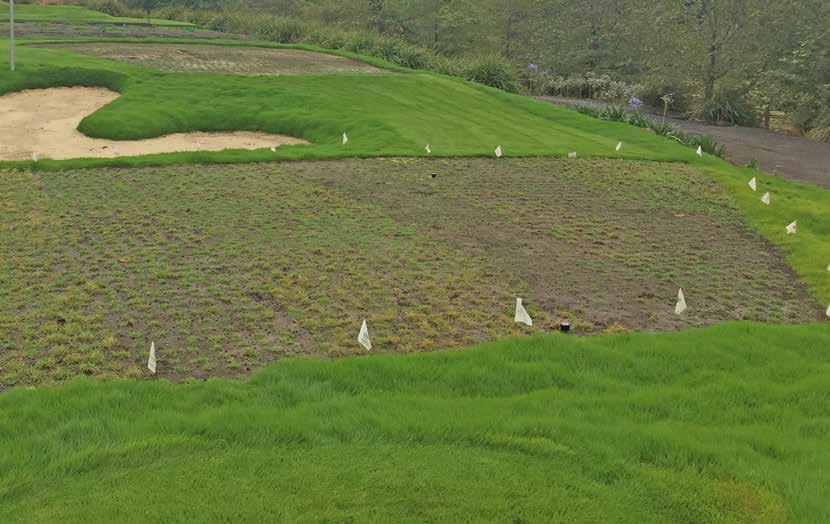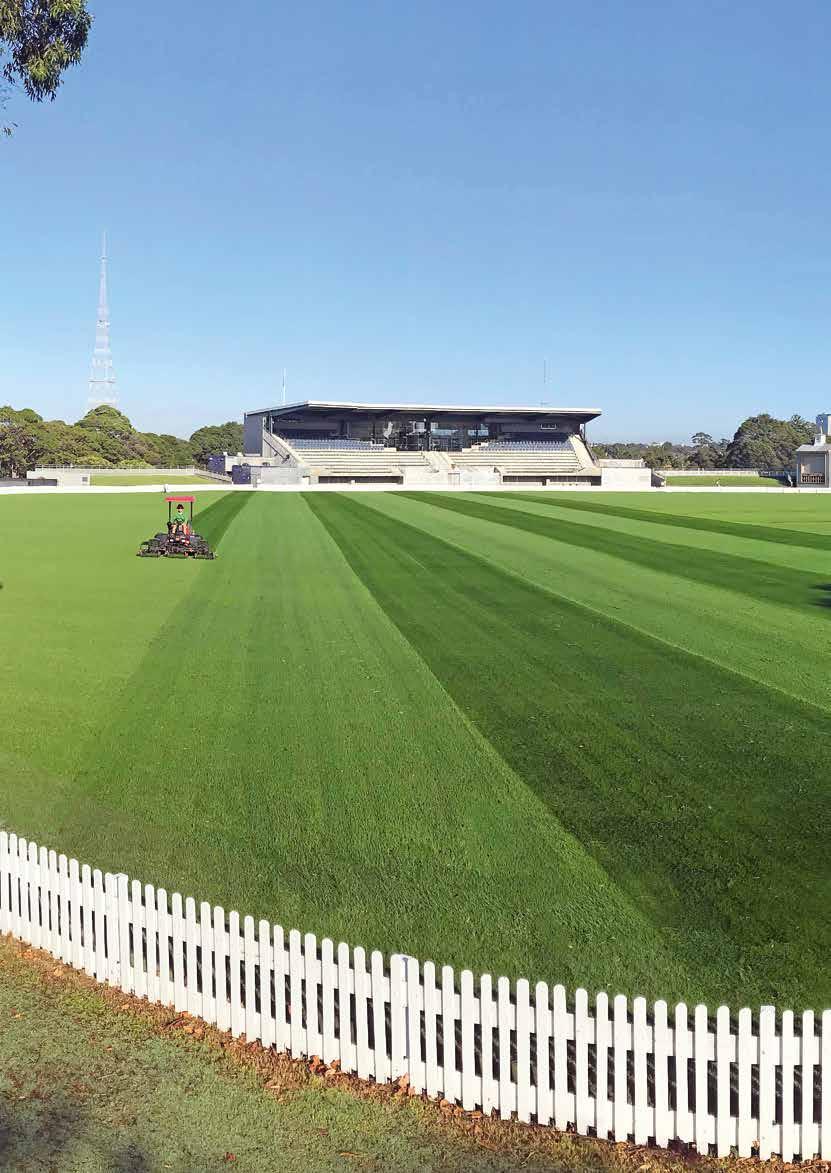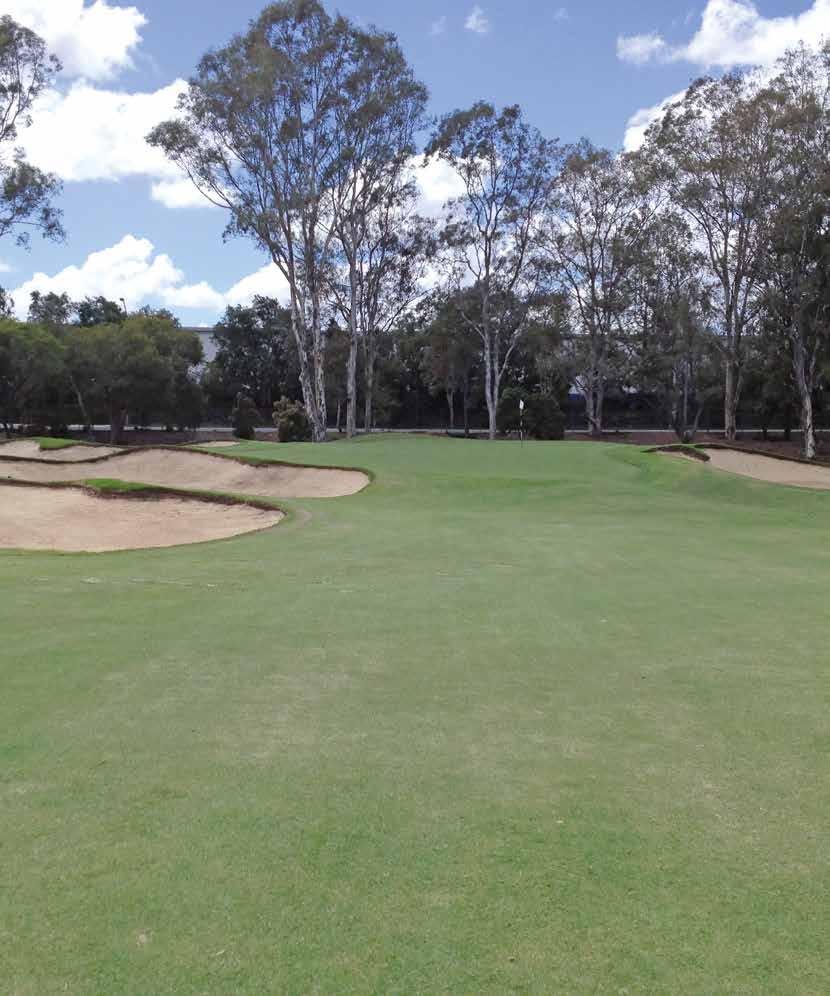
7 minute read
DR EARL ELSNER ON GENETIC REPRODUCTTION
Dr. Earl Elsner Discusses Genetic Reproduction of Familiar Turfgrasses.
By Dr. Earl Elsner
Advertisement
I see advertisements for buffalo seed on the internet but, I cannot buy Sir Walter seed at my local store. The local nursery tells me that buffalo does not produce seed. Why not?
The short answers are that Sir Walter does not produce enough seed for commercial sales. However, if seeds are produced, the turf quality from those seeds will be inferior to Sir Walter. The internet advertised buffalo seed is a different genus and species than our traditional buffalo for home lawns. Vegetative or clonal propagation is the commercial standard for elite instant turf as well as roses, apples, and many other perennial varieties. It is not that growers just want to grow and sell instant turf or rooted cuttings. Vegetative propagation is the commercial standard because consumers want their lawn, rose garden, or apple orchard to have uniform growth, color, drought/disease tolerance as well as other important characteristics. The only current reproductive method that maintains varietal uniformity of these type plants is vegetative propagation.
A more detailed answer to our question should examine the reproductive characteristics of buffalo, couch, and zoysia varieties. The answer should also focus on maintaining the elite genetics of Sir Walter, TifTuf, and Sir Grange. The emphases of the answer will be on morphological uniformity and vegetative (clonal) propagation.
Couch seedhead
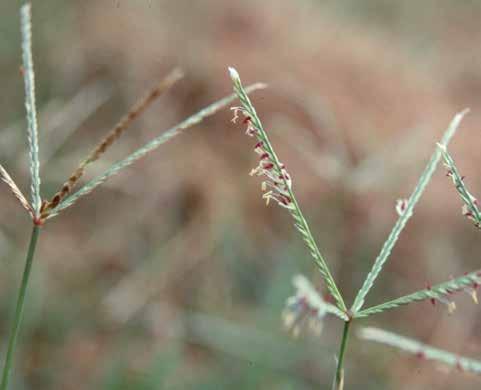
Buffalo, Couch, and Zoysia Reproductive Characteristics
The Poaceae grass family includes warm and cool season turfgrass, food grains, bamboo, pampas grass, miscanthus, and over 10,000 other diverse species. A majority of Poaceae grass plants are monoecious with perfect flowers (male and female reproductive parts are on the same plant and in the same flower structure). Self-pollination is the primary method of sexual reproduction of plants with perfect flowers. In contrast sexual reproduction of our three turfgrass species is normally by cross-pollination.
Cross-pollination of plants with perfect flowers is the effect of self-incompatibility. Self-incompatibility simply means that pollen usually cannot fertilize an ovule if both have similar DNA. If pollen of a plant with different DNA (heterozygous: having two different forms of one or more genes) is available, it can fertilize the ovule by cross-pollination. The degree of selfincompatibility varies among species and varieties. It is an evolutionary mechanism that prevents inbreeding and promotes genetic diversity (heterozygosity). In layman’s terms this means that seedlings of our three turfgrass species will not be exact morphological/physiological copies of the parents. The result is like parents, heterozygous for brown eyes, having children with blue eyes, green eyes, and/or brown eyes. Or, in another example, F1 litters of labradoodle puppies do not replicate either parent but, are a variable combination of coat color, hair Buffalo seedhead
type, shedding/non-shedding, mature size, and other physical and physiological characteristics. It is the same for buffalo, couch, and zoysia’s leaf texture and color, plant growth rate, fertility requirement, drought tolerance, disease resistance, and many other morphological and physiological characteristics.
All commercial turfgrass varieties should be classified as hybrids, i.e. heterozygous seedlings from cross-pollination of plants with different DNA. Even if a rare selfpollination occurred, the seedlings would also be hybrids since the pollen and ovule individually are heterozygous. Hybrids do not breed true, i.e. seedlings have different phenotypes for morphology and physiology. In marketing and other nonscientific writing, the term, hybrid, is rarely used to describe turfgrass varieties.
Clonal hybrid varieties are vegetatively propagated clonal plants or individual seedlings from intentional crosspollinations. Clonal varieties require vegetative propagation to maintain the original plant’s phenotype. Stolons, rhizomes, and plant crowns are the typical vegetative propagules.
Interspecific hybrid varieties are seedlings from cross-pollinations of plants of different species and are of two types. • Cross-pollination of species with the same chromosome number. This type cross-pollination (interspecific hybrid) occurs with zoysia grass and is characterized by fertile seedlings. Cross-pollination of species with different chromosome number. This type cross-pollination (interspecific triploid hybrid) occurs with couch grass and is characterized by sterile seedlings.
Buffalo Stenotaphrum secundatum
Commercial buffalo grass sales are entirely by vegetative material: instant turf and sprigs. Buffalo is not capable of regenerating growth from below ground structures as it does not develop rhizomes.
Even though there are no sources of commercial buffalo seed production, all buffalo varieties produce seed heads with some varieties capable of producing abundant seed. The seed is embedded in a corky structure within the seed head spikelet. Scientists and seed companies have been unable to develop effective seed conditioning processes to release the seed from its corky enclosure. This along with seedling weak vigor has discouraged efforts to develop commercial seeded varieties.
All buffalo varieties are heterozygous which means chance seedlings will be genetically different from their parents. Morphological and physiological differences may include leaf color/texture, growth rate, fertility requirement, as well as disease, drought, and cold tolerance.
A majority of the Australian and US buffalo varieties are selections from established buffalo plantings. Examples: Sir Walter and Palmetto.
Tubes protect stigmas Yellow anthers on zoysia
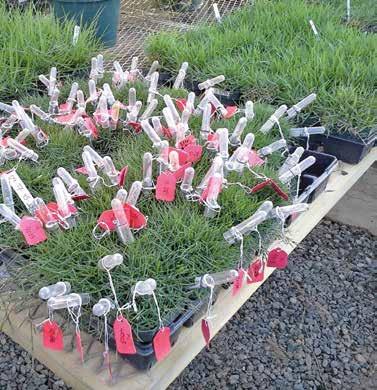
Vegetative propagation and DNA certification is rigorously followed to ensure trueness to Sir Walter’s original varietal description.
Australian consumers should be aware there are two different “buffalo” species in the marketplace. In Australia and the US seed of buffalo grass and buffalo/ryegrass blends is widely advertised. This buffalo is Buchloe dactyloides, a prairie grass native to the central US. Its lower turf quality compared to S. secundatum leads to its primary use in low maintenance turf areas.
Couch Cynodon dactylon and C. dactylon x C. transvaalensis
All commercial varieties of common couch C. dactylon have fertile seedheads and can produce viable seed. Commercial sales include seed, instant turf and sprigs.
Seeded couch varieties are produced by natural cross-pollination of two or more parental lines selected for seed production potential and morphological characteristics. Every seed of the parental lines is genetically different as is every seed of the branded variety. After a seeded landscape area is mature, the surface appearance usually segregates into patches of different texture, growth, and color which is especially apparent during cool weather. The clonal patches were initially individual seedlings in the original planting that were more competitive under the landscape’s environmental and management conditions. Examples: Princess 77, Royal Bengai, and Sahara Clonal couch varieties originate as selections of individual superior plants from instant turf, seeded turf plantings or research plots. The branded clonal varieties are primarily tetraploids with 4 sets of chromosomes. All are fertile and produce seed, but not in sufficient quantity for commercial production. Vegetative propagation is required to maintain varietal characteristics. Examples: Wintergreen, Greenlees Park, Riley’s Evergreen/Conquest.
Triploid couch varieties are interspecific hybrids developed by cross-pollination of C. dactylon 4N=36 with C. transvaalensis 2N=18 to produce 3N=27 plants. An uneven number of chromosomes results in near 100% sterility, no pollen, or seed production. Commercial production of couch triploid hybrid varieties is by vegetative instant turf, sprigs or plugs.
Triploid couch varieties have better pest resistance, finer texture, fewer seedheads, and denser turf than seeded and clonal common (tetraploid) varieties. Vegetative propagation along with requisite genetic certification ensures trueness to variety description for the “Tif” series of varieties. Examples: TifTuf, TifEagle, TifSport, and Santa Ana.
Zoysia Zoysia spp.
Zoysia is primarily sold as instant turf and sprigs. Seed is also available for seeded zoysia varieties. Natural and intentional interspecific crosspollinations frequently occur and produce heterozygous fertile seedlings. Therefore, vegetative propagation is required to preserve unique varietal characteristics.
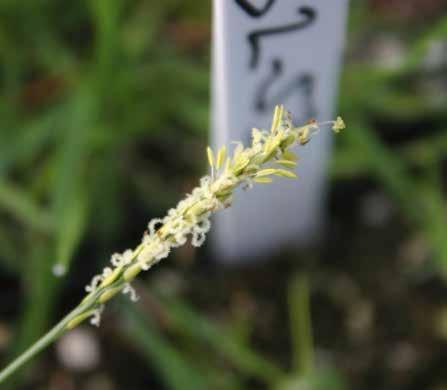
Seeded zoysia varieties are produced similar to couch seeded varieties by utilizing two or more parental lines and natural cross pollination. Since all seeded zoysia varieties are heterozygous, long term uniformity of seeded zoysia plantings is similar to seeded couch plantings with equal risks of morphological and physiological segregation in mature plantings. Seeded variety examples: Zenith, Compadre
Clonal zoysia varieties are developed like buffalo and couch clonal varieties by selecting superior genotypes in existing plantings, or after natural or intentional cross pollinations.
Vegetative propagation is required to maintain elite varietal characteristics. Genetic certification ensures maintenance trueness to a variety’s description. Clonal variety example: Sir Grange
This discussion has described the reproductive characteristics of buffalo, couch and zoysia. In addition, particular emphasis was placed on the potential to maintain morphological uniformity in landscape and other plantings.


